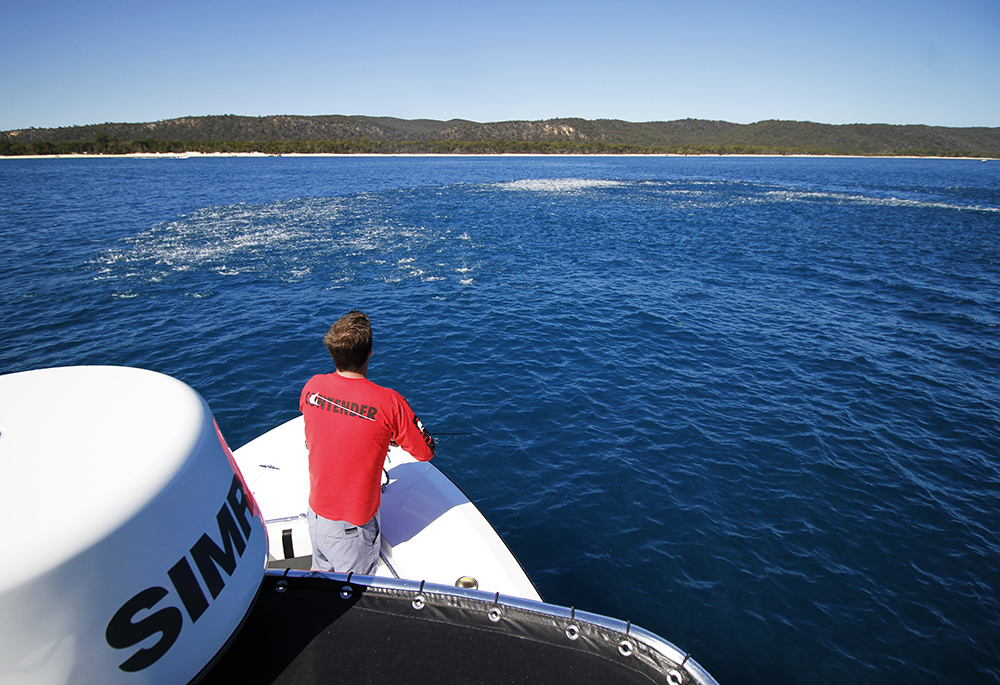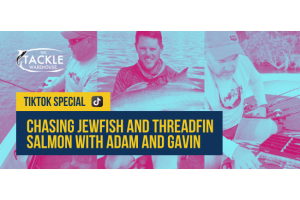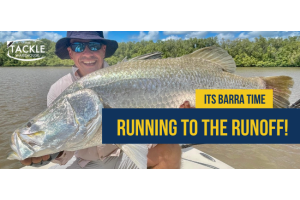
In Part 2 of Basic Snapper Tactics, we continue to investigate some of the more technical considerations for targeting these awesome red fish and ultimately maximising your chances of catching one. The importance and impact of tidal movement, line choice, lure styles and the other gear required will all be covered.
Tide factor
Tidal movement plays a big part in initiating key bite periods with snapper. Tidal movement distributes local forage species which provides snapper the opportunity to search out and ambush anchovies, slimy mackerel, squid, gar, hardiheads and the like. Snapper will use an incoming tide to corral bait schools against reef edges, shallow flats and prominent channel declines.
On an outgoing tide, they will use channel entrances, eddies behind structure and bank edges to ambush baitfish forced from shallow bays and off the sand banks due to the lowering water level. The other important aspect of tidal flow is that it permits you to drift naturally and cover more ground without the need to start your motor. Key bite periods for snapper will often coincide with the two hours before and after high and low tide however it’s worth fishing the entire cycle to get a feel for what will work best for the snapper in your particular waterway.
Soft plastics, vibes and other artificial offerings will often reign supreme during the faster stages of tidal flow when the snapper’s predatory nature is heightened. Baits often come into their own as the current slows, allowing it to settle naturally to the ocean floor. However, both approaches can work at any time of the tidal flow.
Go light to get the bite
As we touched on in part 1, a finesse approach typically leads to more bites. Don’t be afraid to downsize leader and line size to get a bite when things are tough. Wary fish are less likely to be spooked by fluorocarbon leader (which neither attracts nor reflects light) than monofilament leader, especially in shallower water. Some anglers even fish as light as 2KG leaders just to get the bite from wary specimens.
Despite what you might think, using a light leader with a gentle approach can still allow you to land quality fish in the right terrain. Take your time and minimise aggressive rod movements and you are in with a good chance. The reality of this approach is that you will lose the occasional fish due to abrasion on the thin leader, however you will hook fish that would not have done otherwise when using heavier gear.
However, it is more common to use 10kg to 20kg leaders inshore and even heavier as you venture further offshore into deeper waters.
Lures
One of the most exciting things about targeting Aussie snapper, is their willingness to hit artificial lures. In the right conditions, snapper can be caught on any number of artificial offerings.
Soft plastics in the 3” to 7” range paired with the appropriate jig head will allow your offering to slowly waft through the water column. This has proven deadly on snapper over the years in both deep and shallow terrain. Vibes, both hard and soft are a great option for covering ground to find fish. The vibration they emit will catalyse strikes from hungry snapper, which think it’s is a wounded baitfish, often drawing the predators in from a greater distance than many other lures.
Micro jigs have been a more recent development in the snapper scene. These heavy, often colourful lures have a seductive flutter and flash on the drop that snapper often find irresistible. The slow-pitch retrieve of a micro jig using a crank of the reel handle to initially load up your rod tip against the weight of the jig and then have the rod recoil and lift the jig is a popular retrieve. This action is often repeated numerous times before the line is released (free-spooled) allowing the jig to flutter back down towards the ocean floor. This is just one of the micro jigging retrieves which can be absolutely deadly on snapper.
Trolling hardbody minnow lures is also a great way to both find and catch active snapper. Depending on the area you are fishing, you may be able to deploy deep diving lures like the Nomad DTX100mm, Atomic Hardz Shiner 85 Double Deep and Rapala XRMAG 10 to get to the required depth where snapper are holding. This is typically the bottom third of the water column however snapper can often be taken close to the surface so don’t discount getting hit shortly after your lure splashes down. You may even need to consider using a downrigger to get your lure to the required depth, especially whilst probing waters over 10m in depth.
Trolling for snapper is a brilliant way to cover a lot of ground, figure out where fish are holding and explore the terrain, especially if you are fishing a new area.
Gear
When choosing the right gear for targeting snapper, you can keep it fairly simple. A fast actioned, graphite rod around 2.1 to 2.4m in length will increase detection of those subtle bites and provide plenty of backbone for lifting and steering determined fish away from reef, rubble etc.
Reels in the 2500 - 5000 size are a great option for lure fishing inshore and shallower waters (Please note that in this instance we are using Shimano’s sizing format however every manufacturer has their own numbering system for sizing reels). If you aren’t sure about which reel to use, just give us a call or drop in and chat to one of The Tackle Warehouse’s staff.
When it comes to line choice, braid has a massive advantage over monofilament or fluorocarbon as a main line. The near-zero stretch of braid allows you to detect bites more easily (especially at depth) due to their dramatically thinner profiles. Therefore, you can fit more meterage on your spool, with good capacity attainable even on smaller reels. Braid in the 4kg to 10kg range is perfect for most inshore snapper fishing.
If you are fishing the deeper, more rugged offshore snapper grounds, braid in the 10kg to 15kg breaking strain range is going to get the job done however some will fish even heavier due to the other species sometimes encountered out wider. Obviously, these deeper waters will also dictate heavier actioned rods and larger reels.
Your choice of outfit will vary depending on whether you are targeting snapper on lures or baits and additionally the area and depth you are fishing in. There’s a broad array of styles, brands, price ranges and qualities on offer and we can help you choose an outfit that suits both your requirements and budget.

Conclusion
That concludes our snapper basics overview. Hopefully you’ve gained a better understanding of some techniques and gear you will need to target these iconic red fish effectively. Please abide by legal size and bag limits, releasing undersized fish with care so that we can all continue to target and catch these awesome fish well into the future.
If you would like to learn more about chasing snapper, or any other fish for that matter, give us a call, flick us an email or drop in and see us in store. We will be happy to help you out.





